
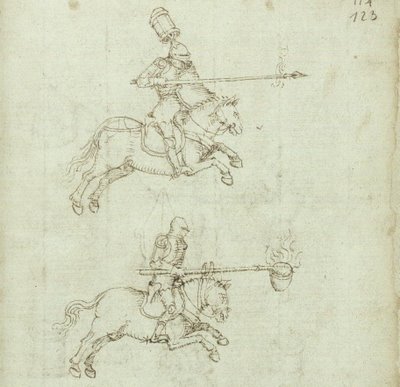
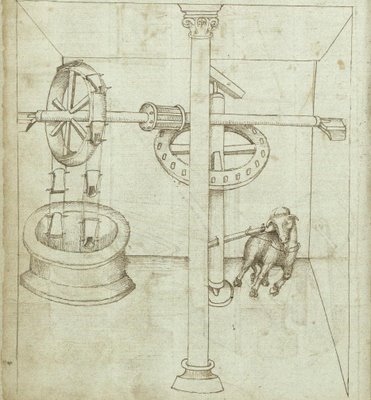
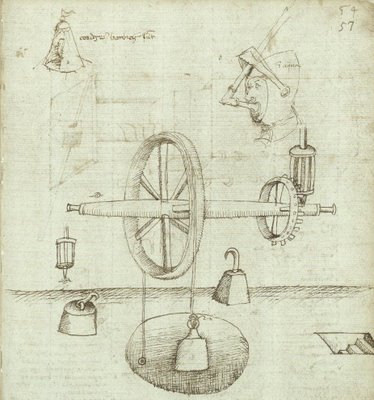
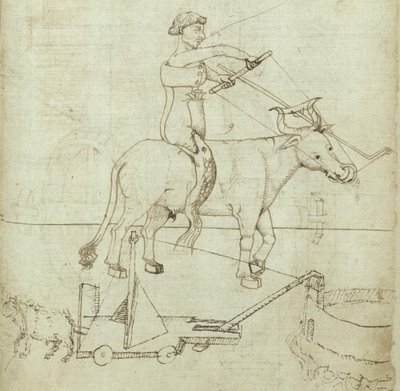
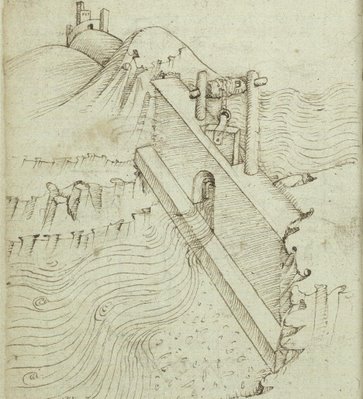
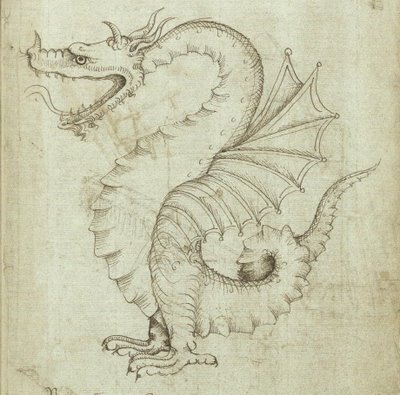
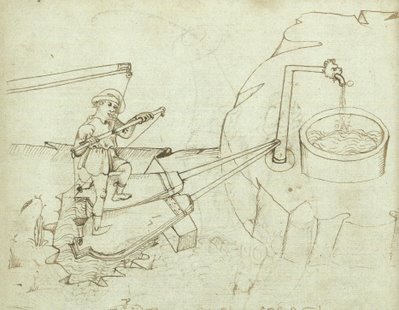

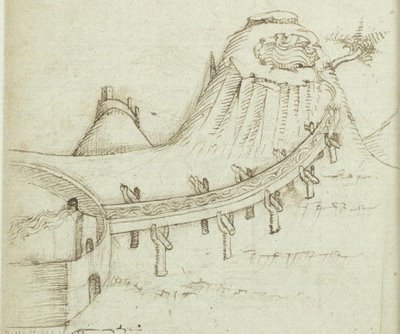
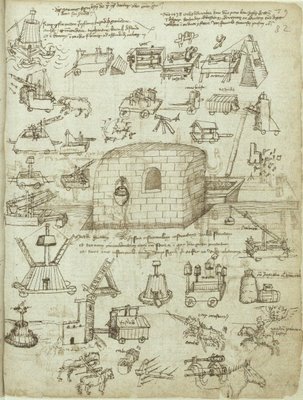
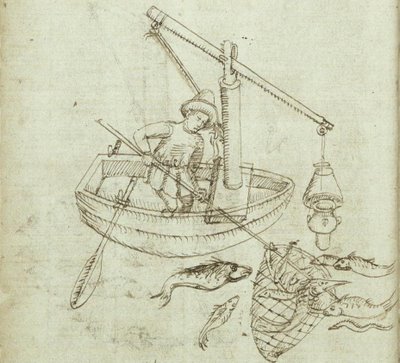
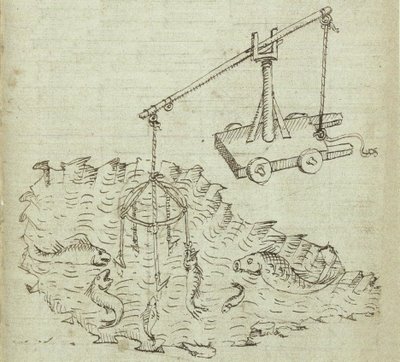
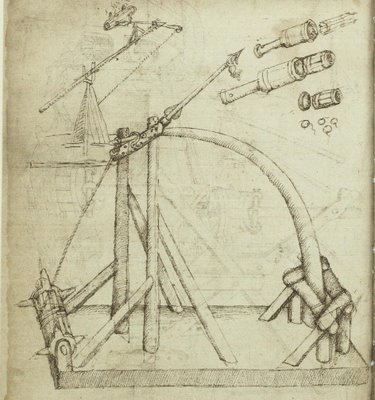
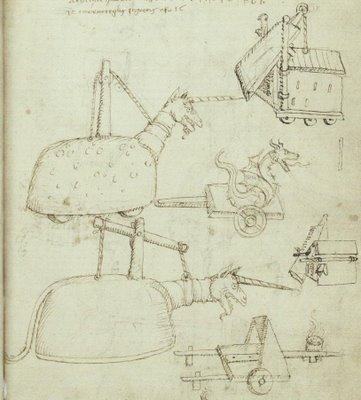
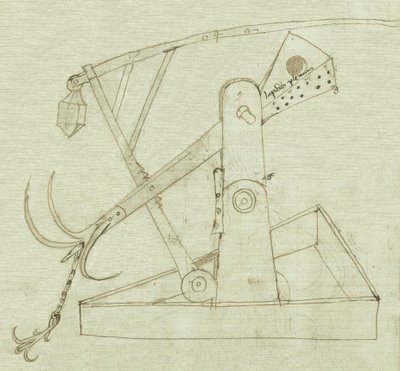
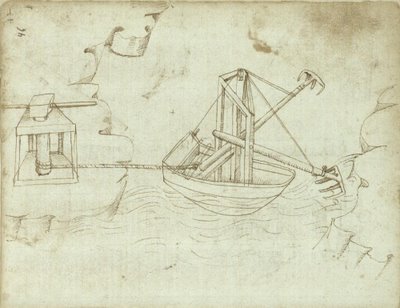
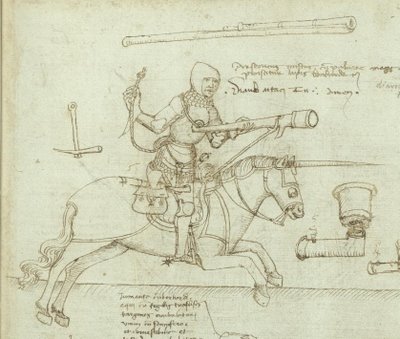
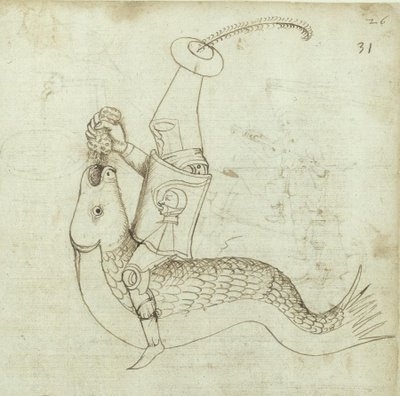
The original machines and engineering diagrams of Leonardo da Vinci were without doubt a high point of the italian renaissance in relation to technological innovation. But his work was not produced in isolation. It seems reasonably certain that da Vinci had access to technical manuscripts produced earlier in the 15th century, written at the beginning of the surge in scientific, artistic and technological pursuits that was destined to spread across Europe.
One of these intellectual 'antecedents' was Mariano di Iacopo [Jacopo] (aka Mariano Taccola; and also referred to during his life as the 'Archimedes of Siena') (1381-?1453). Taccola was a sculptor by trade and pursued a varied career as public adminstrator and notary. That Siena lacked any significant water access and was in a semi-perpetual state of war were no doubt great influences upon him.
At the age of 50 Taccola began producing engineering manuscripts - a new type of technical publication that favoured the prominent display of explanatory illustrations - the first of which was completed in ~1433. These works are said to contain a large array of devices that had not previously been recorded but it's not known for certain how many of these ideas began with Taccola. His output is essentially collected in 2 manuscripts 'De Ingeneis' and 'De Machinis' which, despite any speculation about the originator, document the technical proficiency of the Tuscany engineering community at the beginining of the renaissance.
"At one time or another he has been credited with the invention of the explosive undermining of city walls, the suction pump, underwater breathing apparatus, the box-caisson method for building bridges, water mains and sluice gates, and vertically axled windmills and watermills. Taccola's importance was encyclopedic account of contemporary machine practice. Two ideas of great importance first appeared in Taccola's manuscripts: the chain transmission system and the compound crank with connecting rod. By the latter, rotary motion could be converted to reciprocal motion, a technical concept that has been considered crucial for the postmedieval development of Western technology."And if you believe some of the speculative entries around the internet (I don't) then Taccola was also responsible for inventing the catapult and the trebuchet. Unless you have at least JSTOR journal access online {eg.}, then the internet is not particularly brimming with vast quantities of credible sources about Taccola from my searches.
- The images above all come from a ~280 page facsimile edition of 'De Ingeneis', online among Cornell University's KMODDL digital collection. No thumbnail images unfortunately.
- One often cited original manuscript is Palatina 766 in Florence - the Biblioteca Nazionale Centrale di Firenze has poor quality images however. Sections of this manuscript are reproduced elsewhere and the best quality images are at this Princeton University site which also gives some context and explanation about the machines (I haven't gone through to decide if it's merely a repeat of some of the KMODDL series).
- The Istituto e Museo di Storia della Scienza at the University of Florence have perhaps the most comprehensive site devoted to Taccola, although the manuscript page images are small (everything except the short, visually useless movie, is in english).
- KMODDL biography of Taccola.
- The Sienese Engineers.
- Leonardo and the Renaissance Engineers.
- 'Writings about Technology ca. 1400-ca. 1600 A.D. and their Cultural Implications' by Bert S Hall (I've linked to this before - it's a scholarly essay well worth reading)
- Smith College Museum of Science in Massachusetts has an exhibition of ancient inventions, including a couple that are attributed to Taccola (the images are better quality seen with 'view image' in firefox)
- A small selection of Taccola manuscript pages in colour.
- Leonardo - animated; Leonardo3 (much more for example)
- I haven't quite decided what I think about the 'China1421' site {page that mentions Taccola} that accompanies a book/video from last year. On one view it seems quite detailed and scholarly. But...
- Previously: machines / combat.
No comments:
Post a Comment